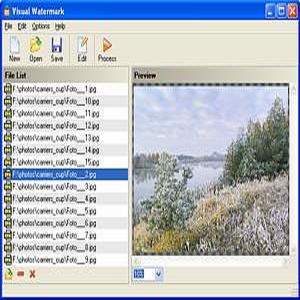

This review also takes papers from good conferences and meeting on video watermarking in addition to above reviewing journal articles. These articles include experimental, analytical and numerical work for specific applications. Few papers are following the structure of H.264/AVC. Most of the papers are deals with MPEG structure. Therefore, only papers published by a method of peer review in high class journal are reviewed. Through extensive literature, some grouping is required. The present review covers the literature of digital video watermarking schemes based on considering the video signal while encoding or based on encoded video in an increasing order of their publication year from 1998 to 2016. Furthermore, the algorithm can correctly implement frame attack and video tamper detection. The experimental results show that the visual quality of the embedded watermarked video is virtually unaffected, and the algorithm exhibits good robustness. The parities of these nonzero coefficients in the medium frequency are modulated to embed watermarks. The 4×4 subblocks, whose DCT nonzero coefficients are sufficiently complex, are selected to embed the watermark. In this paper, the frame number is selected as the watermark information, and the relationship of the discrete cosine transform (DCT) nonzero coefficients is used as the authentication code. We propose a semifragile video watermarking algorithm, which can simultaneously implement frame attack and video tamper detection, herein. With the increasing application of advanced video coding (H.264/AVC) in the multimedia field, a great significance to research in video watermarking based on this video compression standard has been established. Experimental data show that the proposed method has good robustness and imperceptibility. This strategy guarantees the extraction accuracy while reducing the impact of watermark embedding on the original centre view. The watermark data are embedded into the centre view with low embedding strength and jointly extracted from the left and right images. Second, to improve the imperceptibility, we design a joint watermark extraction strategy based on the similarity of the rendered left and right images. Thus, the embedding positions are robust to the affine transformation and geometric attacks, and the watermark robustness improved. The gradient-probability distributions of the vectors are used as the feature data to determine the watermark embedding position. Each two matched feature points construct one matching vector.

We detect the scale invariable feature transformation (SIFT) feature points from centre views and match them in every two adjacent views. First, to improve the robustness, we combine the DIBR rendering rules to construct steady feature data as the selection criterion of watermark embedding position. Therefore, we apply the DIBR rendering features to propose a watermarking method to enhance the watermarking effect. However, the robustness and imperceptibility of the existing methods need to be improved. A variety of digital watermarking methods have been proposed to protect the copyright of DIBR 3D video works. The experimental results show that our algorithm outperforms the state-of-the-art method in terms of imperceptibility, robustness, and computational cost.ĭepth-image-based rendering (DIBR) has become an accessible rendering technology for 3D video. Moreover, a strategy taking advantage of the high decoding reliability of the QRCode is proposed to terminate the extraction in advance, and both the embedding and the extracting process are performed in the spatial domain, which all contribute to further enhance the execution efficiency. The property that is associated with the ratio of the DC coefficient before and after scaling the video resolution motivates us to select the DC coefficient as the quantization value and set the size of the quantization interval by the video resolution to maintain the synchronization between them before and after scaling. For addressing this issue, an adaptive quantization index modulation method is proposed. However, most of them work poorly in resisting scaling attacks, by which the quantization value may fall outside the original quantization interval.

The quantization-based methods are widely used in the existing watermarking algorithms, owing to their low computational complexity and completely blind extraction. Video watermarking plays a vital role in protecting the video copyright.


 0 kommentar(er)
0 kommentar(er)
